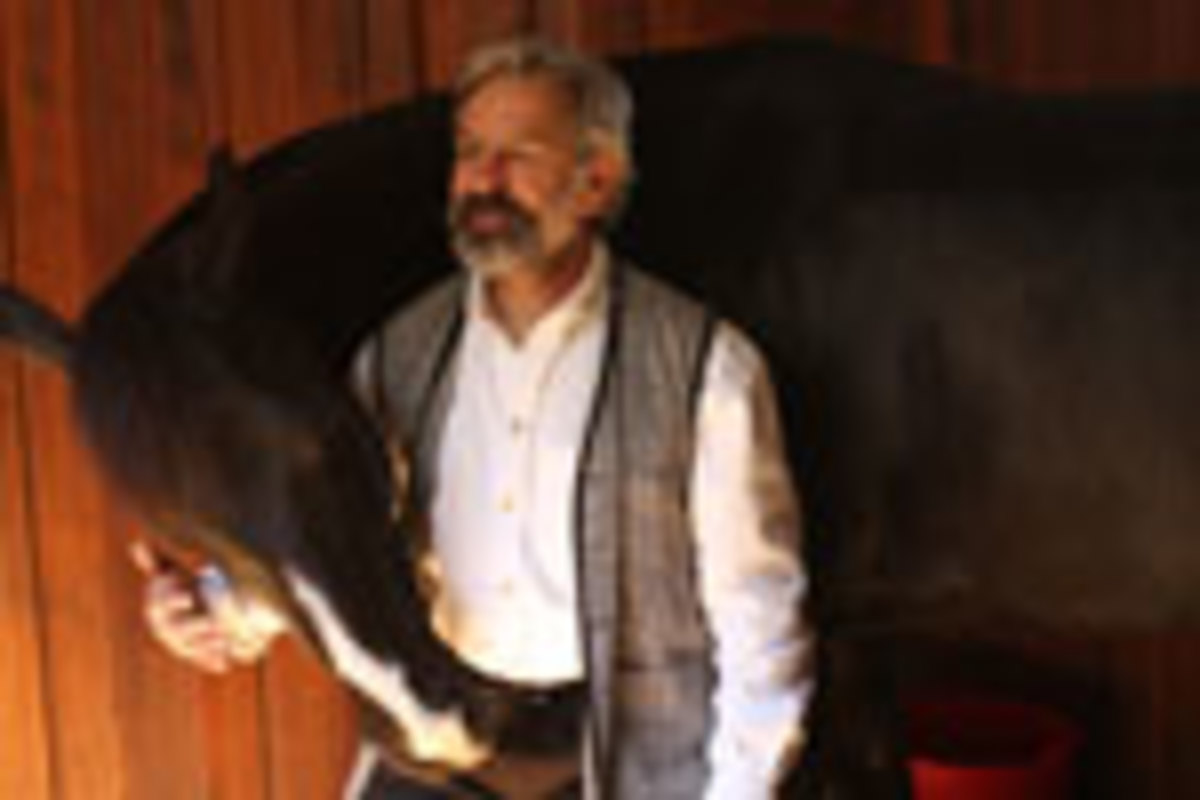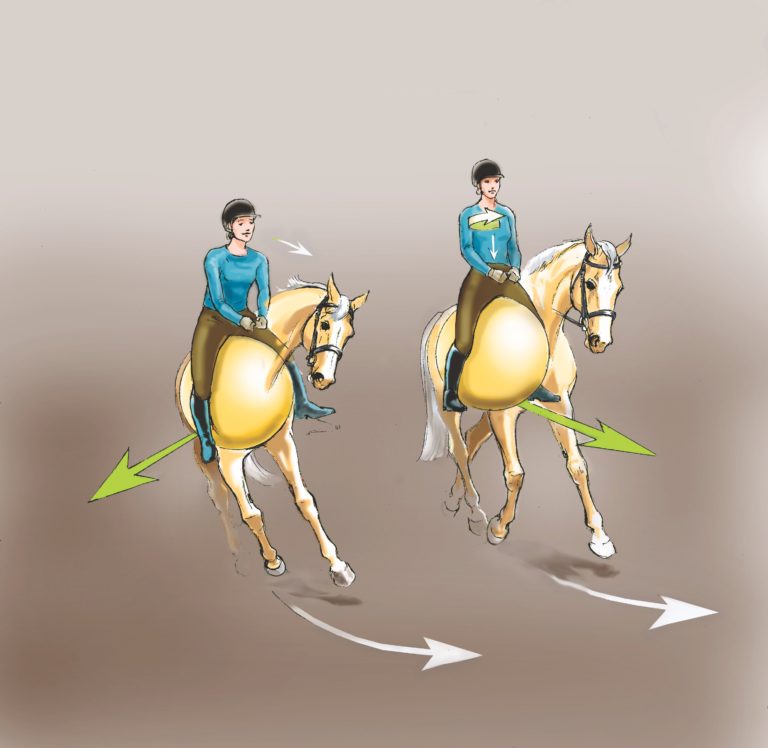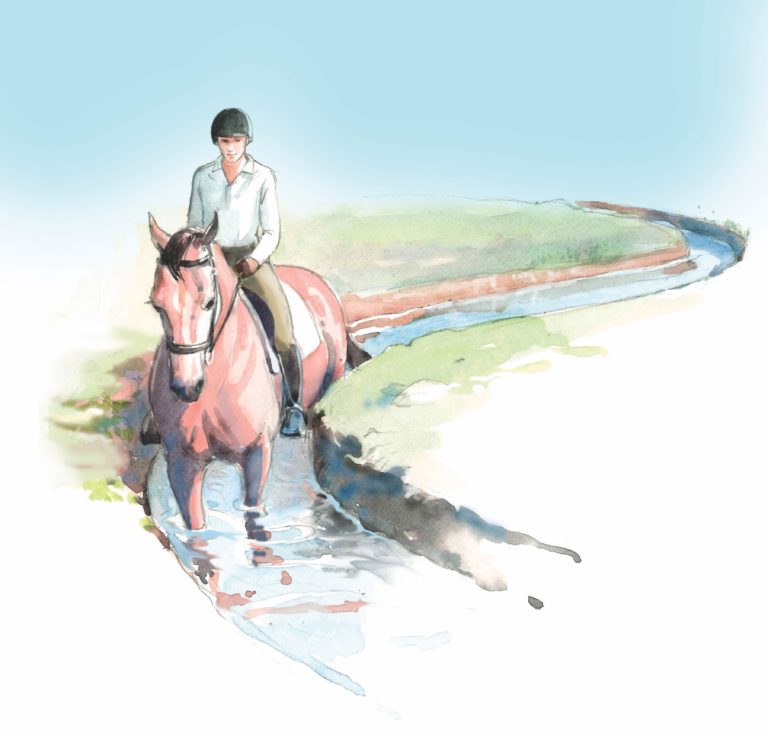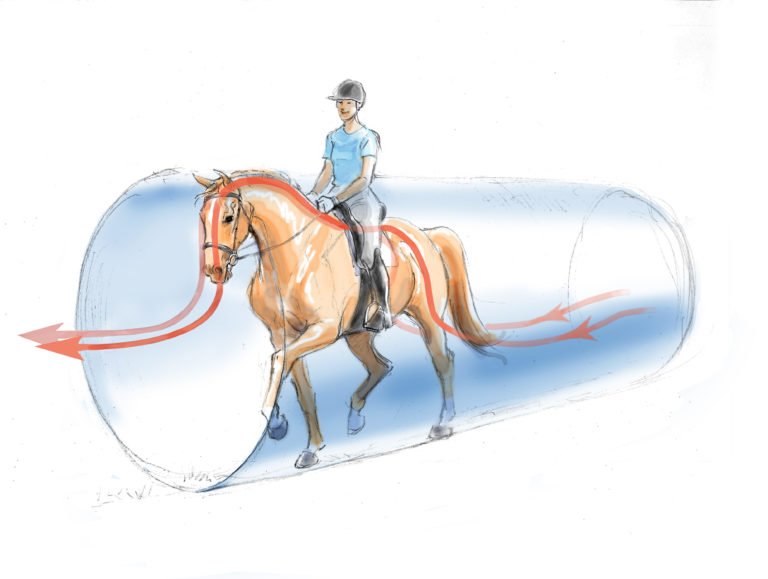Question: What do I need to focus on when riding dressage—on my horse or on myself? I feel I need to focus on my horse to make sure he goes well and stays on the bit and that I give the correct aids. My horse easily tilts his head, which makes me feel that I have to keep looking down at his head to check on his straightness.
Name withheld by request
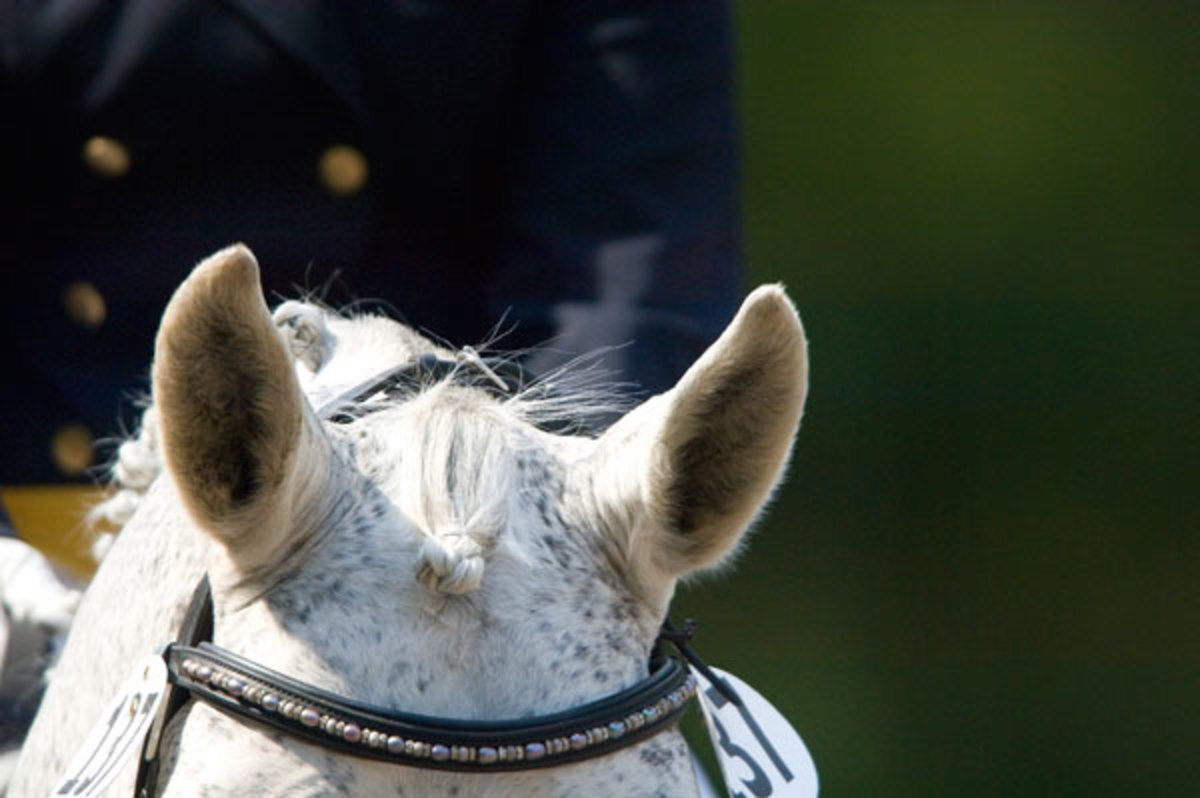
Richard Weis
Answer: I’d be inclined to replace the question of what to focus on with how to get into the zone that creates focus.
I see successful dressage riders fully absorbed in and open to every element—movements, bounces, jolts, swings, oscillations, and even smells (those lovely horsy sweat smells) as well as sounds of saddles, etc. There is plenty to intrigue and savor on the back of a horse. This is a highly sensate state, fully alive and present, curiously playful and joyous, perhaps child-like. It’s easy to forget the wonder of having such an intimate relationship with a horse when faced with rules and notions of how it should be.
To become fully absorbed, you play awareness games and you practice them enthusiastically. Games give your mind and body something to do, leaving no space for worry or other saboteurs. An example: A centerline is far from the security of a wall. You’re on it and heading for C. The long sides are 10 meters away but still there and a useful reference for straightness. Use your eyes to focus on the long sides and C simultaneously. You’ll notice you can see the ground and what’s above you, all at once. This is a wonderful spatial-awareness game some call “soft eyes.”
Here’s a little game that might be fun to play if straightness is an issue for you (as it is if your horse’s head tilts). Think of the legs of your horse as the legs of a table. All must be of equal length if the tabletop is to be level and not wobbly. For instance, if your horse is falling in, it means the inside legs of your table are too short. If you were sitting on a table that was collapsing, you’d instinctively move to fix it. Do the same with your horse. If you’re successful, you’ll get a smoother ride, your horse’s ears will become level and you’ll hear equal footfalls as rhythm is refined.
Another effective game to help you get into the zone is to mentally connect your body parts with your horse’s body parts. Sense your ears, your horse’s ears, your eyes and your horse’s eyes.
Find a book with comparable anatomy, at least the skeletal systems. Study how similarly we are designed considering the obvious four-legged/two-legged difference. Go through and sense every part of you with every comparable part of your horse. When you get good at that, you and your horse will get very deeply connected—fully absorbed or in the zone.
Now for two little scenarios to ponder: You love old-time dancing and you’re very good at it. You are out dancing with someone you are keen on, but he or she is inclined to make silly dancing mistakes from time to time. Do you worry about the mistakes before they happen and dance tentatively like something is about to go wrong? (If so, how does your night end?) Or do you make sure you are really on the money, hear the music, feel your partner, lead just a bit and make sure your hand contact is informative, expressing rhythm, direction, encouragement, etc.?
After a while, you’ll find yourself just dancing, all worry gone, and your partner is at ease so that even if a wrong step happens, it doesn’t disturb the flow between you. (In this case, how will your night end?)
Games to help you get into the zone—what I call “absorption games”—are simple, fun ways of giving your body and mind something constructive to do. It’s a bit like tuning a radio to the station: Once it’s done, you can just let it play for you. Once you are fully absorbed in the horse and the activity, you’ll just ride.
Hold your horse with nothing but positive regard, get yourself into the zone and dance with him!
Richard Weis is a leading authority on applying the Alexander Technique to dressage riders. He is based in New Gisborne, Australia.
